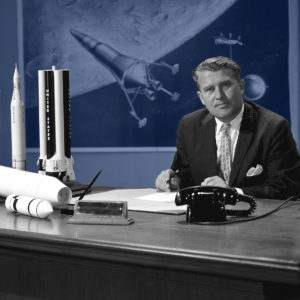The First Man in Space
In April 1961, cosmonaut Yuri Gagarin’s spacecraft Vostok I was launched at 9:07, orbited Earth once and landed at 10:55 in the Soviet Union. His spaceflight brought him immediate worldwide fame. Gagarin was awarded the Order of Lenin and given the titles Hero of the Soviet Union and Pilot Cosmonaut of the Soviet Union. Monuments were raised to him, and streets were renamed in his honor across the Soviet Union. He died on March 27, 1968, in Kirsach, Russia.
early life
Yuri Gagarin was born in the village of Klushino, near Gzhatsk (renamed Gagarin in 1968 after his death), on 9 March 1934. His parents worked on a collective farm: Alexey Ivanovich Gagarin as a carpenter and bricklayer, and Anna Timofeyevna Gagarina as a milkmaid. Yuri was the third of four children: older brother Valentin, older sister Zoya, and younger brother Boris.
Like millions of people in the Soviet Union, the Gagarin family suffered during Nazi occupation in World War II. Klushino was occupied in November 1941 during the German advance on Moscow, and an officer took over the Gagarin residence. The family was allowed to build a mud hut, approximately 3 by 3 metres (10 by 10 ft) inside, on the land behind their house, where they spent a year and nine months until the end of the occupation. His two older siblings were deported by the Germans to Poland for slave labour in 1943, and did not return until after the war in 1945. In 1946, the family moved to Gzhatsk, where Gagarin continued his secondary education.
In 1950, Gagarin entered into an apprenticeship at age 16 as a foundryman at the Lyubertsy Steel Plant near Moscow, and also enrolled at a local “young workers” school for seventh grade evening classes. After graduating in 1951 from both the seventh grade and the vocational school (with honours in moldmaking and foundry-work), he was selected for further training at the Saratov Industrial Technical School, where he studied tractors. While in Saratov, Gagarin volunteered for weekend training as a Soviet air cadet at a local flying club, where he learned to fly — at first in a biplane and later in a Yak-18 trainer. He also earned extra money as a part-time dock laborer on the Volga River.
Soviet Space Program
In 1960, after much searching and a selection process, Yuri Gagarin was chosen with 19 other pilots for the Soviet space program. Gagarin was further selected for an elite training group known as the Sochi Six, from which the first cosmonauts of the Vostok programme would be chosen. Gagarin and other prospective candidates were subjected to experiments designed to test physical and psychological endurance; he also underwent training for the upcoming flight. Out of the twenty selected, the eventual choices for the first launch were Gagarin and Gherman Titov due to their performance during training sessions as well as their physical characteristics — space was limited in the small Vostok cockpit, and both men were rather short. Gagarin was 5 ft 2 in tall.
Gagarin thus became both the first human to travel into space, and the first to orbit the earth.
On 12 April 1961, the Vostok 1 spacecraft with Gagarin aboard was launched from Baikonur Cosmodrome. Gagarin thus became both the first human to travel into space, and the first to orbit the earth. On 27 March 1968, while on a routine training flight from Chkalovsky Air Base, he and flight instructor Vladimir Seryogin died in a MiG-15UTI crash near the town of Kirzhach. The bodies of Gagarin and Seryogin were cremated and the ashes were buried in the walls of the Kremlin on Red Square.



